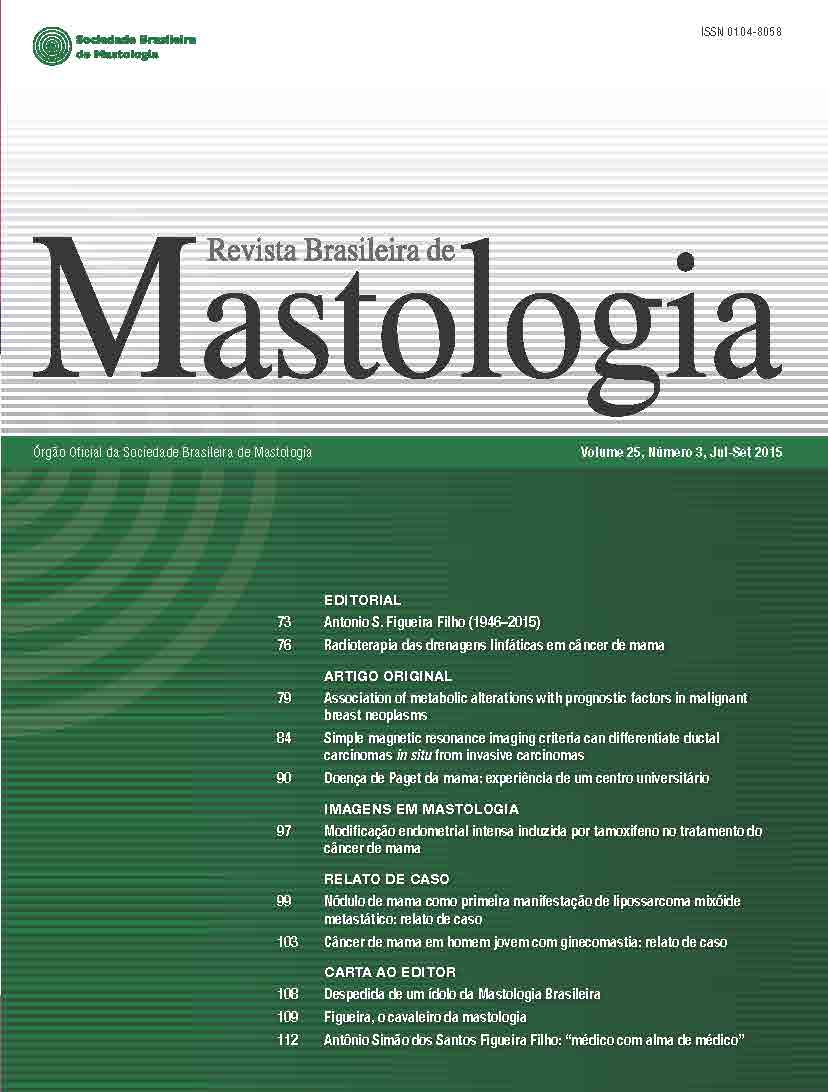Association of metabolic alterations with prognostic factors in malignant breast neoplasms
Keywords:
Breast neoplasms, Metabolic diseases, Prognosis, Cholesterol, TriglyceridesAbstract
Objectives: There are few studies in the literature correlating metabolic alterations with prognostic factors in breast cancer. The aims of this study were to evaluate serum levels of total cholesterol, HDL, LDL, triglycerides and fasting glucose, weight, body mass index and blood pressure, and relate them to prognostic factors (stage, lymph node involvement, histological grade, estrogen and progesterone receptors, ki-67 and Her2/neu) in patients with breast cancer. Methods: A retrospective study was conducted in Mastology Service of the Discipline of Gynecology and Obstetrics/Oncologycal Research Institute (IPON) of the Universidade Federal do Triângulo Mineiro (UFTM). We evaluated 100 patients with breast cancer treated at Mastology Clinic (surgical and/or clinical treatment). Serum levels of total cholesterol, HDL, LDL, triglycerides and fasting glucose, weight, body mass index, blood pressure, staging, lymph node involvement, histological grade and immunohistochemical panel (estrogen and progesterone receptors, ki-67 and HER-2/neu) were recorded. Data were expressed as the mean ± standard deviation, and the values were compared by using Student’s t-test. P-values less than 0.05 were considered statistically significant. Results: Histological grades 1 and 2 were significantly correlated with higher HDL serum levels (p=0.02). Higher levels of triglycerides were found more frequently in grade 3, and highest weight was related to Ki-67 positive, but only with a trend towards significance (p=0.07). Conclusion: HDL can be related to prognosis in breast cancer.
Downloads
Downloads
Published
How to Cite
Issue
Section
License

This work is licensed under a Creative Commons Attribution-NonCommercial-NoDerivatives 4.0 International License.









